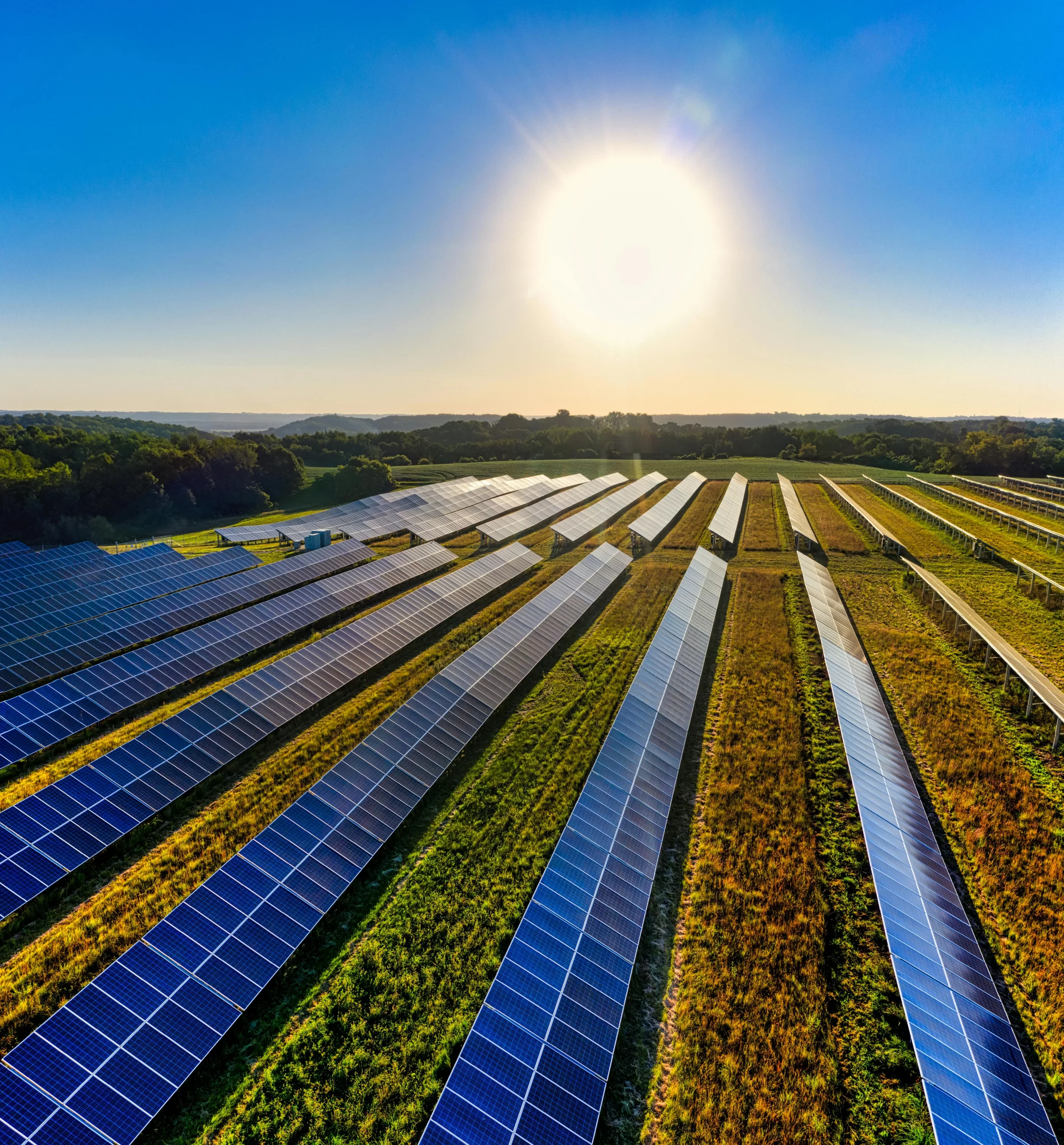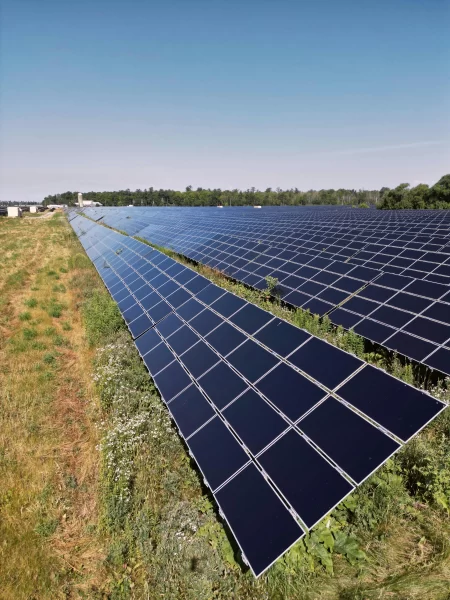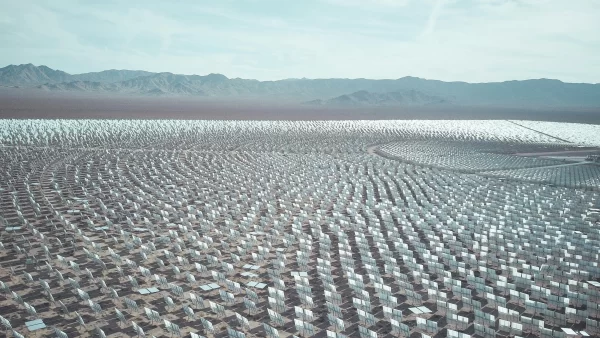
The Ultimate Guide about Solar Farms
What is a solar farm?
A solar farm is a collection of solar panels set up in very large area of land to capture sunlight and turn it into electricity. These farms are typically located in sunny areas and can cover vast stretches of land with solar panels mounted on racks or rooftops. The panels use photovoltaic cells to get sunlight and generate direct current (DC) electricity. This is then converted into alternating current (AC) for use in homes, businesses, and the power grid.
They are crucial for several reasons:
- Renewable Energy Production – They are a major source of renewable energy, generating large quantities of electricity through solar power
- Promoting Energy Independence – Additionally, they play a significant role in promoting energy independence through the large amount of electricity it produces
- Job Opportunities and Boosting Local Economies – solar farms also contribute to job creation and the growth of local economies due to the advancements and benefits they offer.

How do solar panels used in solar farms to generate electricity?
The solar panels used works the same as the one that is being used in residential houses. The only difference is the number of solar panels being used for electricity generation. Solar panels that is being used is 10x or 100x more than the ones being used in homes. Although it requires more sophisticated infrastructure to support these solar panels, the function is still the same.
Types of Solar Farms

- Utility-Scale Type: large solar farms, known as utility-scale solar farms, are built to provide a significant amount of electricity to the power grid using hundreds of thousands of solar panels.
- Community Type: these types are smaller in size and allow multiple households to benefit from the electricity generated, making solar energy accessible to those without suitable roofs for solar panels.
Solar Farm Evolution
Early Stages
In the early 1980s, the first big solar farm was set up. Arco Solar built a 1 MW solar park in Lugo, California, which was a trailblazer in the industry. After that, solar farms have spread out, especially in the United States. Currently, there are more than 37,000 MW of utility-scale solar projects up and running in the US, with another 112,000 MW in the works.
Innovations of Solar farms
In the early 1980s, the first big solar farm was set up. Arco Solar built a 1 MW solar park in Lugo, California, which was a trailblazer in the industry. After that, solar farms have spread out, especially in the United States. Currently, there are more than 37,000 MW of utility-scale solar projects up and running in the US, with another 112,000 MW in the works.
Growth of Solar Farms
The growth of solar farms is supported by government policies aimed at decarbonizing energy systems. For instance, the U.S. Department of Energy’s Solar Futures Study projects that solar could supply 40% of the nation’s electricity by 2035.
Arising Challenges in Solar Farms
Despite the growth, solar farms face challenges. Some of these challenges includes land-use conflicts and community opposition. Agrivoltaic systems are emerging as a solution. This allows for dual use of land for both solar energy and agriculture. This, addressing concerns about land availability and food production.
Conclusion
Solar farms are indeed a crucial component of the renewable energy landscape. It can offer numerous benefits such as reducing dependence on fossil fuels, promoting energy independence, and providing economic opportunities through job creation. By harnessing sunlight through photovoltaic cells, these large-scale installations convert solar energy into electricity for widespread use.
As technology advances, solar farms continue to evolve. Allowing it to become more efficient and innovative as years pass by. Despite facing challenges like land-use conflicts, the growth of solar farms is bolstered by supportive government policies and a global push towards sustainable energy.
Other Sources
Want to know more about solar farms or news about it? Check out the other sources below:
FAQ
Check out our most frequent solar farm questions here.
Solar farms can have minimal long-term impact on soil quality, as they do not require heavy machinery or chemicals once installed. The land underneath solar panels can often support vegetation, improving biodiversity by providing habitats for pollinators and other wildlife. Additionally, solar farms are typically designed to allow for future agricultural use, as the infrastructure can be removed, restoring the land to its original state.
Developers conduct environmental assessments to identify and protect sensitive habitats. Measures such as planting native vegetation, creating wildlife corridors, and using elevated panel mounts help minimize disruption. Solar farms can even enhance biodiversity by providing shaded areas and reducing soil erosion, benefiting local ecosystems.
Solar farms provide clean energy, reduce strain on the grid, and often include infrastructure upgrades. They generate tax revenue for local governments, create jobs during construction and maintenance, and offer farmers a steady income through land leases, diversifying their revenue streams while preserving agricultural land for future use.
Solar panels convert sunlight into direct current (DC) electricity using photovoltaic cells. Inverters then transform DC into alternating current (AC), which is fed into the grid for distribution to homes and businesses. Excess energy can be stored in batteries or shared with the grid, ensuring a reliable and sustainable power supply.
Contact Us
25 Eastern Steel Road
Milford, CT, United States
(+1) 203-408-2440
info@primeenergysolar.com
marketing@primeenergysolar.com
If you are a reporter looking for information on media services please contact us at:
marketing@primeenergysolar.com
